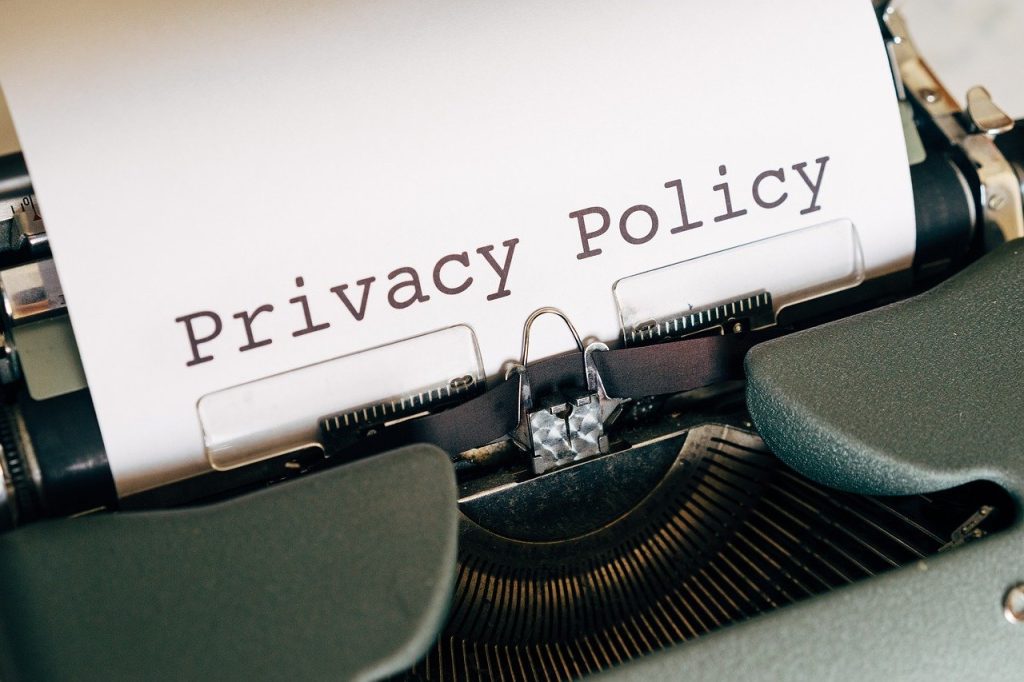The 2022 Email Marketing Strategy You Didn’t Know You Needed
2021 is gone for good. A challenging year for everyone, right? Email marketing was no exception. By this time, your email campaigns have borne their fruits and you have started crafting your 2022 digital marketing strategy. Planning ahead may seem intimidating at first, but rest assured you will value the time and effort saved throughout the year.
Setting your digital marketing strategy beforehand will function as a guide for the upcoming year, as it will contain your marketing campaigns’ concepts, as well as the channels through which you will share them. A carefully planned strategy will not only help you stay relevant to your goals but also readjust your email marketing efforts to potential setbacks.
As to what you should do differently this year, we will be introducing ways for you to get through 2022 without unpleasant surprises.
- What went wrong, what went right?
Tough as it might have been, 2021 has offered valuable lessons. Before deciding where you need to go, you must understand where you were. So, take a step back and rethink everything:
- What worked and what didn’t?
- Did you achieve your goals?
- Did your brand reach a high conversion rate?
- Do you have sufficient information about your customers?
Depending on your answers, you can evaluate your email campaigns’ performance. Are you satisfied with your findings? Now is the time to learn from past mistakes; check where there is room for improvement and start implementing the changes required. Also, If you realize your brands’ identity isn’t precise and consistent in all your marketing channels, spend some time rebuilding it. After all, it’s the first thing your customers notice.
In case you think that your campaign metrics aren’t enough, don’t hesitate to conduct surveys to see your business through the eyes of your consumers. Talk to them and use their feedback. Ask for your recurring customers’ favorite products. Engage with your recipients through social media; tweet them asking for their opinion, check out your Facebook reviews, set up Instagram polls. Email marketing is, first and foremost, about having a well-established target audience.
- Set your goals straight
After monitoring your campaign performance and customer feedback, use these metrics to establish your brand’s direction for 2022. How many new subscribers do you wish to gain? How can you better target your audience? What products or services do you want to promote the most? Which channels will you be using to do so?
Build an agenda as to the desired goals, add deadlines for each campaign, and stick to the plan. All these factors should be outlined in your email marketing strategy. To save even more time and trouble for your marketing team, choose between some of the best email marketing platforms to have things done with ease.
Remember that your goals are supposed to guide you throughout the year, so make them actionable and straightforward. Specific deadlines and metric reviews will help you check that you are headed in the right direction. You should also make sure you are being realistic about your goals. Keep your expectations high but be honest as to if you can accomplish them.
- Enhanced data privacy is here to stay

Data privacy has become a trending topic in the email marketing world. Actions like Apple’s Mail Privacy Protection demonstrate that big companies are taking it into serious consideration. It seems logical, too: email recipients are worried about how their personal data is shared, therefore asking for more control over it. In 2022, we expect other major brands to follow Apple’s example, putting their users’ privacy above everything else.
Privacy consciousness will have us evaluate the type of data we gather from our users and how we use it. Email marketing is up to a challenge due to the changes coming but fortunately, working within a framework that requires compliance with certain rules isn’t new to us all.
How can you reassure your customers about this compliance? Provide them a physical email address and other contact information of your brand. Communicate that you follow all privacy guidelines and protect your consumers’ data. Offer them access to simple and visible options to unsubscribe inside your newsletters. These gestures demonstrate business ethics on your end, ultimately leading to your customers trusting you.
- Time has come for interactive and inspirational content

Interactive content has traveled a long way to become an email marketing prerequisite. Developing interactive elements that are consistent throughout the different marketing channels seems daunting.
Interactive elements have a true impact on your content strategy, because they encourage recipients to perform actions like clicks or conversions, thus providing you with valuable statistics. Make use of games, polls, forms, and other types of content that newsletter recipients can interact with inside the email itself, rather than clicking to get redirected to a website.
Interactivity minimizes the steps required for recipients to take certain actions, and at the same time, it encourages recipient engagement and conversions.
Is using interactive technology in our content strategy enough, though? The answer is surely no. We should also invest in great storytelling since our campaign’s email content should fascinate our customers and give them all the answers they are seeking for.

- Is this the end of the “open rates” metric era?
Apple’s Mail Privacy Protection went into effect in September of 2021. Citing privacy issues, Apple stopped senders from tracking open rates using invisible pixels. (Source) The whole email world felt overwhelmed when Apple announced its new privacy features, resulting in email experts questioning not only the worth of open rates as a success metric, but also the future of email marketing itself.
It has done less harm than anticipated but relevant developments have made open rates less reliable to use for measuring campaign success. In 2022, marketers are considering more impactful metrics that help them identify what’s working and what isn’t in their email strategy.
First things first, no performance metrics review makes sense before establishing your goals. Do you want customers to open your newsletter or click on links and take action? In the first case, open rates might be enough, but the second case requires investment in metrics like click-through rates and overall recipient engagement. Focusing on sales and conversions generated by email campaigns allows us to optimize toward these revenue-driving metrics.
To take it one step further, 2022 will require communication between your brand and consumers to be more personal. Encourage replies, and when recipients send you their feedback, by all means, write back. And when you do get in touch, never forget about our older -but beloved- acquaintance: email personalization.

- Email personalization – always relevant
Given that billions of emails are sent and received each day worldwide, you certainly have a lot of competition in your users’ inboxes. Therefore, standing out is a one-way road and it comes down to sending newsletters that your subscribers can’t help but open.
Generic emails are just not enough anymore when it comes to converting users. And it’s not just about conversions – emails with advanced customization are more likely to generate recipient engagement and conversions.
Make the best out of your recipients’ data to craft engaging email content with personalized subject lines, copy, offers or discounts, scheduling, which will all lead to higher deliverability. In 2022, brands must rise to the challenge, benefiting from contact information, AI-based insights, and interactive content for an unforgettable email experience.
- Benefit from artificial intelligence tools
If you haven’t been paying attention, you might be surprised at how much AI has evolved. Nowadays, there are tools that automatically personalize content for each subscriber according to past interactions, create engaging email subject lines based on response rates and track their performance, and improve delivery times for higher conversion rates. As regards the last part, AI algorithms can find the best time to dispatch your emails so they’ll be opened and read.

As you can tell, the use of AI in email marketing reduces the workload and offers insights to boost revenue, reduce costs, and improve deliverability. That is why marketers are testing various AI tools to write email content, subject lines, and calls-to-action. AI may not be ready to create everything from scratch yet, but it does a great job helping marketers optimize content as effectively as they themselves can do manually; in many cases, even better.
Final Thoughts
The email marketing world has advanced and adopted new habits. So has every marketer that doesn’t want to be left behind. And don’t get me wrong; trends do matter. There is one trend though that is (and always will be) relevant: audience.
Customers are more than just email addresses; so, they need to feel like they count. Marketers have to create a feel-good factor in their emails so that customers perceive value and interact with them. Not every email sent to a customer should make them purchase something; I, for instance, really appreciate it when a brand I am engaged with sends an email just to stay in touch. Bear in mind that some newsletters can just nurture relationships.
And while new tools, mechanisms, and data monitoring can get your campaigns to the top, humanizing your emails can do something priceless – get your customers to always remember how engaging with your brand made them feel.
Maria Fintanidou

Maria Fintanidou works as a Copywriter for email marketing automation software Moosend, having created the Help Articles (FAQs) and overseen the platform’s translations in Greek and Spanish. She loves exploring new cultures and ways of thinking through traveling, reading, and language learning.
What Is WooCommerce Product Slider and Why Your Store Needs It
Why Do Product Images Matter So Much in Online Stores? When someone visits an online store the…
0 Comments9 Minutes
How to Streamline Your Customers’ Shopping Experience?
The goal for any online store is to make shopping as smooth as possible. When visitors move…
0 Comments8 Minutes
Strengthening Brand-Customer Relationships Through Gamified Loyalty Programs
Creating lasting connections with customers has become increasingly vital as the marketplace grows…
0 Comments6 Minutes
How to Use SEO and SEA Together in Search Engine Marketing
In digital marketing, search engine marketing (SEM) plays a critical role in improving online…
0 Comments10 Minutes
Content Marketing Growth Hacks: Real Shortcuts to Drive Traffic
Are you still lagging in content marketing? Sticking to these old strategies seems…
0 Comments10 Minutes
How to Build a Strong Local Following Using Social Media Marketing
In the days of likes, shares, and stories, local businesses have a golden opportunity to create…
0 Comments9 Minutes
Why WooCommerce is the Best Choice for Your Online Store?
WooCommerce stands out as a top option for anyone looking to build an online store. This platform…
0 Comments8 Minutes
How to Use AI-Powered SEO Tools for WordPress eCommerce
SEO is a critical factor in the success of any e-commerce WordPress store. As competition…
0 Comments11 Minutes








